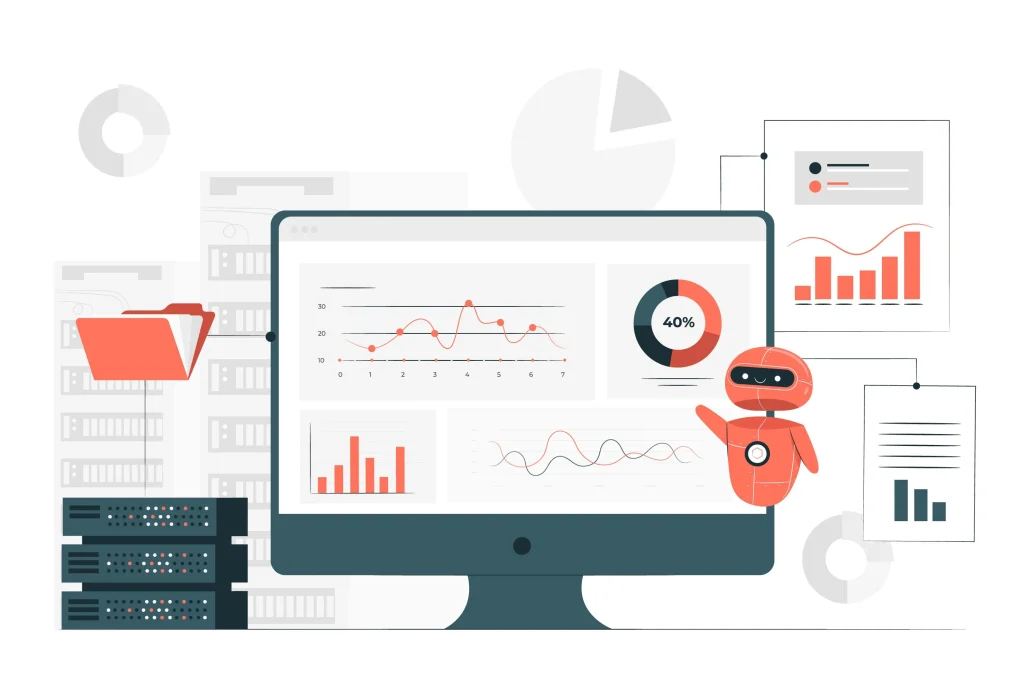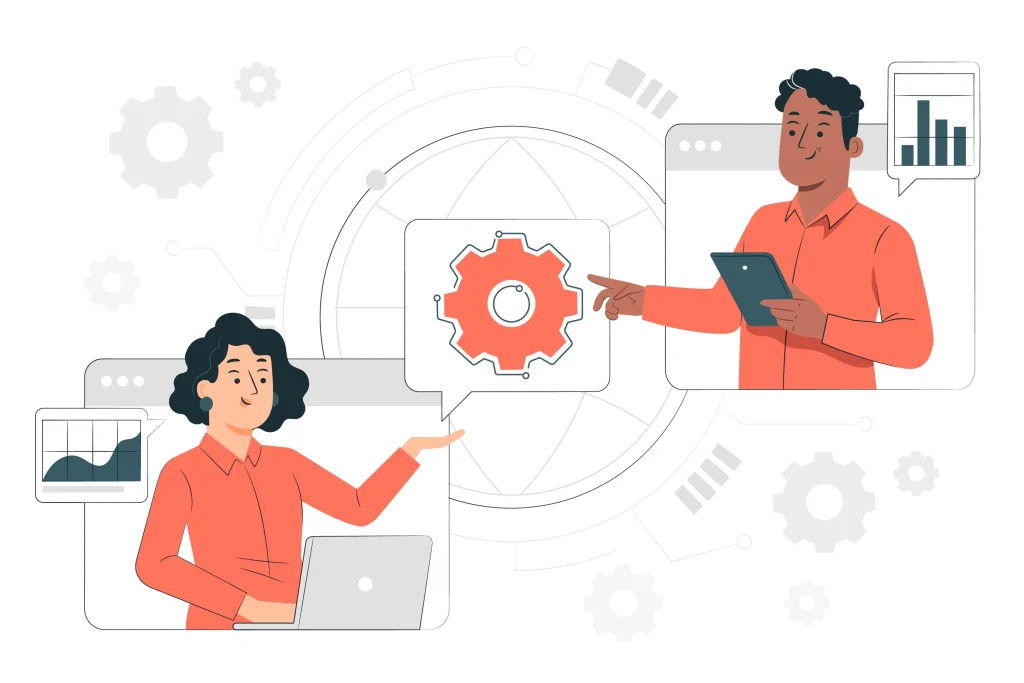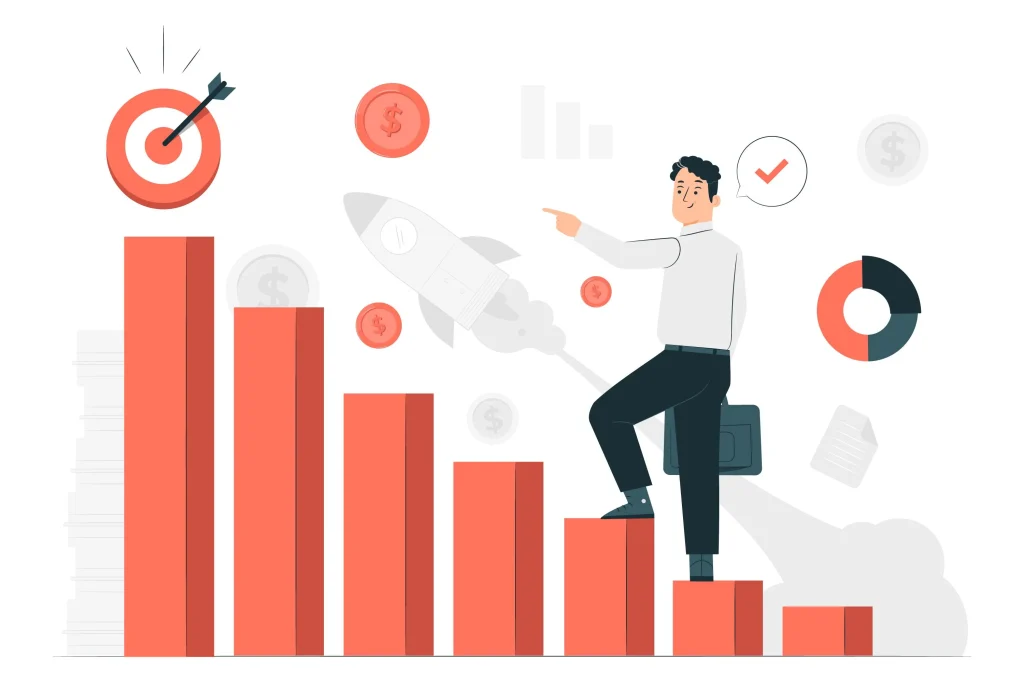
The synergy between human intellect and machine-driven insights is unraveling unprecedented possibilities, from enhanced decision-making to personalized learning, and from predictive analytics to streamlined collaboration. The transformative journey embarked upon by AI within team management extends beyond mere augmentation; it ushers in a new era where the amalgamation of artificial and human intelligence becomes the catalyst for unparalleled success. As we navigate this frontier, it becomes imperative to explore not only the advancements AI brings but also the ethical considerations, challenges, and the profound implications for the future of work.
Enhanced Decision-Making
In the ever-evolving landscape of modern business, leaders are navigating unprecedented challenges that demand a new approach to decision-making. Enter Artificial Intelligence (AI), a transformative force reshaping how teams are led. This article delves into the profound impact of AI on decision-making within team management, exploring how it enhances efficiency and fundamentally transforms the leadership dynamic.
The Role of AI in Decision-Making:
One key area where AI is making waves is decision-making. Traditional decision-making processes often rely on intuition and experience, but AI introduces a data-driven paradigm. By leveraging advanced algorithms and real-time data analysis, AI empowers leaders with unparalleled insights into team performance, project dynamics, and individual contributions. This shift from gut feeling to data-driven decision-making brings a new level of precision and foresight to leadership strategies.
Real-Time Data Insights:
AI-driven tools excel at processing vast amounts of data in real time, providing leaders with a dynamic understanding of their team’s current state. Whether tracking project milestones, identifying performance trends, or assessing resource allocation, AI delivers actionable insights promptly. This real-time perspective enables leaders to make informed decisions on the fly, fostering agility in response to rapidly changing business landscapes.
Optimizing Resource Allocation:
AI’s ability to analyze data extends to optimizing resource allocation within teams. By identifying areas of strength and areas needing improvement, leaders can strategically allocate resources where they are most needed. This ensures the team operates efficiently, maximizing productivity and minimizing potential bottlenecks.
Strategic Decision-Making:
The integration of AI enables leaders to move beyond reactive decision-making to a more strategic approach. Predictive analytics, a core component of AI, allows leaders to anticipate future challenges and opportunities. With this foresight, decision-makers can proactively steer their teams, positioning them for success in an ever-changing business environment.
The infusion of AI into the decision-making process marks a paradigm shift in team management. The precision, real-time insights, and strategic foresight AI empower leaders to navigate complex challenges confidently. As businesses embrace this transformative technology, the era of enhanced decision-making through AI promises not just efficiency but a revolution in how teams are led, setting the stage for unprecedented success and innovation.

Improved Communication and Collaboration
Effective communication and collaboration are the cornerstones of successful team management in the dynamic landscape of modern business. Artificial Intelligence (AI) is emerging as a powerful catalyst, transforming how teams interact and work together. This article explores the profound impact of AI on communication and collaboration within team dynamics, showcasing how it goes beyond traditional methods, fostering innovation and synergy.
The Changing Landscape of Team Communication:
Effective communication lies at the heart of every successful team. AI redefines the communication landscape by introducing intelligent tools that facilitate seamless interaction. From chatbots that streamline routine queries to virtual assistants that schedule meetings effortlessly, AI optimizes communication processes, allowing teams to focus on high-value tasks. This evolution enhances efficiency and promotes a more connected and engaged team environment.
Collaboration Redefined:
Thanks to AI-driven platforms that transcend geographical boundaries, collaboration is no longer confined to physical proximity. These platforms enable real-time sharing of ideas, documents, and updates, fostering a collaborative ecosystem. AI algorithms can intelligently organize and prioritize information, ensuring that team members have access to the right data at the right time, thus promoting smoother collaboration and knowledge sharing.
Breaking Language Barriers:
Language differences can be a hurdle to effective communication in an increasingly globalized business landscape. AI-driven language translation tools break down these barriers, enabling teams with diverse linguistic backgrounds to collaborate seamlessly. This inclusivity enhances communication and contributes to the richness of diverse perspectives within the team.
Enhancing Remote Team Dynamics:
The rise of remote work has necessitated new approaches to collaboration, and AI is at the forefront of this transformation. Virtual collaboration tools powered by AI enable remote teams to maintain a sense of connection and workflow continuity. From virtual whiteboards to collaborative project management platforms, these tools ensure that distance is no longer a hindrance to effective teamwork.
Integrating AI into team communication and collaboration marks a paradigm shift in how teams operate. The efficiency, connectivity, and inclusivity facilitated by AI-powered tools contribute to a more agile and innovative team environment. As businesses embrace these transformative technologies, the future of team management holds exciting possibilities, where communication and collaboration are not just processes but drivers of unparalleled synergy and success.

Personalized Learning and Development
The significance of continuous learning within teams cannot be overstated in the ever-evolving professional development landscape. Artificial Intelligence (AI) is ushering in a new era of learning and development, tailoring educational experiences to individual team members. This article explores how AI revolutionizes personalized learning, fostering a culture of continuous growth and excellence within teams.
The Traditional Learning Landscape:
Historically, learning and development initiatives often followed a one-size-fits-all model, providing standardized training programs regardless of individual needs. AI disrupts this paradigm by introducing personalized learning platforms that adapt to each team member’s unique strengths, weaknesses, and learning preferences. This shift from a uniform approach to a tailored one reshapes how teams acquire and apply new skills.
AI-Driven Personalization:
AI algorithms analyze vast datasets, including individual performance metrics, learning styles, and preferences, to craft personalized learning paths. These paths may include targeted training modules, interactive simulations, and real-world scenarios, ensuring team members receive content tailored to their needs and career aspirations. This accelerates the learning process and enhances the applicability of acquired skills within the team context.
Continuous Skill Enhancement:
The dynamic nature of the business landscape demands continuous skill enhancement. AI ensures that learning and development are ongoing processes, adapting to changes in industry trends and individual career trajectories. By providing real-time feedback and suggesting relevant learning opportunities, AI empowers team members to stay ahead in their respective domains, fostering a culture of continuous improvement.
Empowering Employee Autonomy:
Personalized learning through AI empowers employees to take control of their professional development. Team members can set personalized goals, track their progress, and choose learning paths that align with their career aspirations. This autonomy enhances job satisfaction and contributes to a more motivated and engaged workforce.
Integrating AI into personalized learning and development represents a transformative leap forward in team management. The tailored approach not only enhances individual skill sets but also contributes to the overall strength and adaptability of the team. As businesses embrace these AI-driven learning platforms, they pave the way for a future where teams are equipped with knowledge and empowered to thrive in the dynamic and competitive landscape of the modern workplace.

Predictive Analytics for Team Performance
In the competitive landscape of modern business, the ability to anticipate and proactively address challenges is a hallmark of successful team management. Artificial Intelligence (AI) is ushering in a new era with predictive analytics, providing leaders with the tools to forecast and optimize team performance. This article explores how predictive analytics revolutionizes team management, offering insights beyond historical data to shape a more resilient and successful future.
The Evolution of Team Performance Analysis:
Historically, team performance analysis relied heavily on retrospective evaluations, often overlooking predictive indicators. With the integration of predictive analytics, leaders can now go beyond past performance metrics. AI algorithms analyze vast datasets, identifying patterns and trends that offer valuable insights into future challenges and opportunities. This shift from reactive to proactive management is redefining how teams navigate the complexities of the business landscape.
Real-Time Insights for Strategic Decision-Making:
Predictive analytics empowers leaders to make informed, forward-looking decisions. By analyzing real-time data, AI algorithms can identify potential roadblocks, resource bottlenecks, and performance gaps before they impact the team’s objectives. This real-time insight allows leaders to adjust strategies, allocate resources efficiently, and guide their teams with a proactive mindset.
Forecasting Team Dynamics:
AI doesn’t just stop at predicting project outcomes; it extends to forecasting team dynamics. By analyzing communication patterns, collaboration effectiveness, and individual contributions, predictive analytics can highlight potential issues within the team structure. Leaders can then implement targeted interventions to enhance collaboration, address conflicts, and foster a positive and productive team environment.
Optimizing Resource Allocation:
Predictive analytics aids in optimizing resource allocation by anticipating future project requirements. Whether it’s manpower, budget, or time, AI-driven models can forecast the resources needed for upcoming projects. This ensures that teams are adequately equipped, reducing the risk of bottlenecks and delays while maximizing efficiency.
Incorporating predictive analytics into team management marks a paradigm shift in how leaders guide their teams. The ability to anticipate challenges and opportunities provides a competitive edge in the fast-paced business environment. As businesses embrace the power of AI-driven predictive analytics, they enhance team performance and lay the groundwork for a future where strategic foresight is a cornerstone of success.

Workforce Optimization and Task Automation
In the contemporary workplace, efficiency and productivity are paramount, driving the need for innovative solutions that streamline operations. Enter Artificial Intelligence (AI), a disruptive force revolutionizing team dynamics through workforce optimization and task automation. This article explores how AI integration is reshaping how teams operate, emphasizing efficiency, resource allocation, and the strategic optimization of tasks.
The Imperative for Workforce Optimization:
Workforce optimization has emerged as a critical focus for organizations aiming to maximize human capital. AI-driven workforce optimization tools analyze data such as individual strengths, skills, and work patterns to allocate tasks strategically. This ensures that team members are assigned responsibilities aligning with their expertise and maximizes overall team efficiency.
Task Automation Redefined:
Task automation, a key facet of AI, involves delegating routine and repetitive tasks to machines, freeing human resources for more strategic endeavors. From data entry to report generation, AI-powered automation tools handle mundane tasks with precision and speed, allowing teams to concentrate on high-value, creative, and strategic aspects of their work.
Intelligent Resource Allocation:
AI’s role in workforce optimization extends to intelligent resource allocation. By analyzing real-time data, AI algorithms identify peak periods of productivity, enabling leaders to allocate resources effectively during high-demand periods. This optimizes work output and prevents burnout by ensuring a balanced distribution of tasks among team members.
Enhanced Productivity and Job Satisfaction:
Workforce optimization and task automation contribute to heightened productivity levels within teams. AI streamlines workflows reduces manual errors, and accelerates project timelines, creating an environment where team members can focus on tasks that require critical thinking and creativity. This shift enhances job satisfaction as team members are engaged in fulfilling, meaningful work rather than repetitive tasks.
In conclusion, the convergence of workforce optimization and task automation under the umbrella of AI is reshaping team dynamics and redefining how organizations approach productivity. Strategic task allocation, intelligent resource management, and the elimination of routine activities not only enhance efficiency but also contribute to a more satisfied and motivated workforce. As businesses embrace these AI-driven optimizations, they pave the way for a future where teams operate at their peak potential, achieving success through a harmonious blend of human and machine capabilities.

Continuous Performance Monitoring
In the ever-evolving leadership landscape, Emotional Intelligence (EI) is gaining prominence. As organizations recognize the impact of emotions on team dynamics and success, Artificial Intelligence (AI) is emerging as a transformative tool to enhance emotional intelligence in leadership. This article delves into AI’s profound role in nurturing emotional intelligence, fostering stronger connections, and shaping empathetic leaders.
The Essence of Emotional Intelligence:
Emotional Intelligence often considered the cornerstone of effective leadership, encompasses understanding and managing one’s emotions while empathizing with others. AI is now pivotal in augmenting these qualities, allowing leaders to navigate the complexities of human interactions more adeptly.
AI-Driven Emotional Insights:
AI tools analyze communication patterns, sentiment, and social cues to provide leaders with valuable insights into the emotional well-being of their teams. By gauging the overall sentiment within the team, leaders can identify potential issues, address concerns, and foster a positive and supportive work environment. This data-driven approach adds a layer of objectivity to emotional assessments, aiding leaders in making informed decisions.
Personalized Leadership Development:
AI facilitates understanding team dynamics and supports leaders in their personal growth. AI can recommend personalized development programs by identifying areas of strength and potential improvement in emotional intelligence. This tailored approach ensures that leaders continue to enhance their emotional intelligence, creating a ripple effect that positively influences the entire team.
Conflict Resolution and Team Cohesion:
Emotional intelligence is paramount in resolving conflicts and fostering team cohesion. AI-driven tools can analyze communication dynamics to detect early signs of tension or disputes within the team. By intervening at the right time and addressing emotional undercurrents, leaders can prevent conflicts from escalating and maintain a harmonious and collaborative team environment.
Integrating AI in leadership practices brings a new dimension to the cultivation of emotional intelligence. AI enhances the empathetic and human side of leadership by providing leaders with actionable insights, personalized development opportunities, and support in conflict resolution. As organizations embrace AI to bolster emotional intelligence, they are not just optimizing leadership but creating a workplace where emotional well-being is prioritized, fostering a culture of collaboration, resilience, and success.

Cybersecurity for Team Collaboration
In the digital age, where collaborative platforms and communication tools are integral to team workflows, the significance of cybersecurity cannot be overstated. As teams increasingly rely on Artificial Intelligence (AI)-driven collaboration tools, ensuring the security of sensitive information becomes paramount. This article explores how AI is reshaping cybersecurity practices to safeguard team collaboration in an era where data protection is non-negotiable.
The Growing Need for Cybersecurity in Team Collaboration:
As collaborative technologies evolve, so do the threats associated with data breaches and cyber-attacks. Integrating AI in team collaboration introduces innovative solutions to fortify cybersecurity measures. AI-driven cybersecurity tools detect and respond to potential threats and actively adapt to the evolving nature of cyber risks, offering a robust defense against unauthorized access and data compromise.
AI-Powered Threat Detection and Response:
Traditional cybersecurity measures often rely on predefined rules, making them susceptible to emerging threats. AI, however, leverages machine learning algorithms to analyze vast datasets, detect anomalies, and identify potential security risks in real time. This proactive approach enables swift threat response, minimizing the impact of cybersecurity incidents on team collaboration platforms.
User Behavior Analytics for Anomaly Detection:
AI’s contribution to cybersecurity extends to user behavior analytics. By establishing baselines of typical user behavior, AI can identify anomalies indicating a security threat, such as unauthorized access or data exfiltration. This intelligent monitoring enhances the security posture of collaborative platforms and provides insights into potential insider threats.
Securing End-to-End Encryption:
AI plays a crucial role in securing end-to-end encryption within collaborative tools. By continuously monitoring encrypted communication channels, AI-driven cybersecurity tools can identify and mitigate potential vulnerabilities without compromising the privacy and confidentiality of team discussions and file sharing.
The marriage of AI and cybersecurity is a game-changer in ensuring the integrity and security of team collaboration. As organizations embrace AI-driven tools, they fortify their defenses against evolving cyber threats, creating a safer and more resilient environment for collaborative work. In this era where data protection is paramount, integrating AI in cybersecurity practices represents a proactive and forward-thinking approach, safeguarding team collaboration and fostering a culture of trust and reliability.

Ethical Considerations in AI-Driven Team Management
As Artificial Intelligence (AI) continues to redefine team management, ethical considerations have emerged as a critical aspect of this transformative journey. Integrating AI in team dynamics brings forth many opportunities, but it also raises ethical questions related to bias, transparency, and the responsible use of data. This article delves into the ethical considerations inherent in AI-driven team management, emphasizing the importance of a principled and human-centric approach.
The Promise and Perils of AI in Team Management:
AI brings unprecedented capabilities to team management, from enhancing decision-making to streamlining workflows. However, its reliance on algorithms and data-driven processes introduces ethical challenges. Questions of bias, privacy, and accountability become central as AI algorithms influence everything from recruitment decisions to team performance evaluations.
Addressing Bias and Fairness:
One of the primary ethical considerations in AI-driven team management is the potential for algorithm bias. AI systems learn from historical data; if that data contains biases, it can perpetuate and even exacerbate them. Ethical leaders must actively work to identify and mitigate biases in AI algorithms, ensuring fair and equitable treatment for all team members.
Transparent Decision-Making:
The opacity of AI decision-making processes raises concerns about accountability and transparency. Ethical team management requires leaders to prioritize transparency in how AI algorithms operate. Clear explanations for automated decisions ensures team members understand and trust the processes driving their work environment.
Privacy and Data Security:
AI-driven team management often involves collecting and analyzing vast amounts of data. Ethical considerations demand a commitment to protecting individual privacy and ensuring robust data security measures. Leaders must balance leveraging data for improved team performance and respecting the rights and privacy of individual team members.
Empowering Human Oversight:
Ethical AI-driven team management involves empowering human oversight over automated processes. While AI can provide valuable insights and recommendations, human decision-makers must retain the authority to intervene, question, and adjust AI-driven decisions. This human-centric approach ensures that ethical considerations remain at the forefront of team management practices.
The integration of AI in team management offers immense potential, but it also demands a heightened awareness of ethical considerations. Leaders must navigate the ethical frontier with diligence, addressing biases, ensuring transparency, safeguarding privacy, and empowering human oversight. By adopting a principled approach to AI-driven team management, organizations can harness the benefits of AI while fostering a culture of trust, fairness, and ethical responsibility within their teams.
Conclusion
In the wake of the AI revolution within team management, we stand at the precipice of a new era where the capabilities of intelligent technologies push the boundaries of human potential. AI’s transformative impact extends far beyond optimizing processes; it fosters a cultural shift, challenging conventional norms and propelling teams into realms of innovation and adaptability previously deemed unattainable. As organizations embrace and navigate this transformative journey, a harmonious collaboration between human intuition and machine intelligence emerges as the linchpin for success.
The trajectory ahead is not without its challenges – ethical considerations, the need for transparency, and the delicate balance between automation and human touch. However, as leaders grapple with these complexities, the transformative impact of AI becomes evident in the elevated potential for creative problem-solving, strategic decision-making, and the cultivation of a workforce that thrives on continuous learning. The canvas upon which the future of team management is painted is vast, dynamic, and teeming with possibilities, ushering in an era where the transformative impact of AI transcends the ordinary and catalyzes extraordinary achievements.
This article was created by the FirstHR team. You can find even more helpful HR tips in the Guides section. In the Template section we have prepared for you the most popular HR documents that you can download for free. Enjoy!





